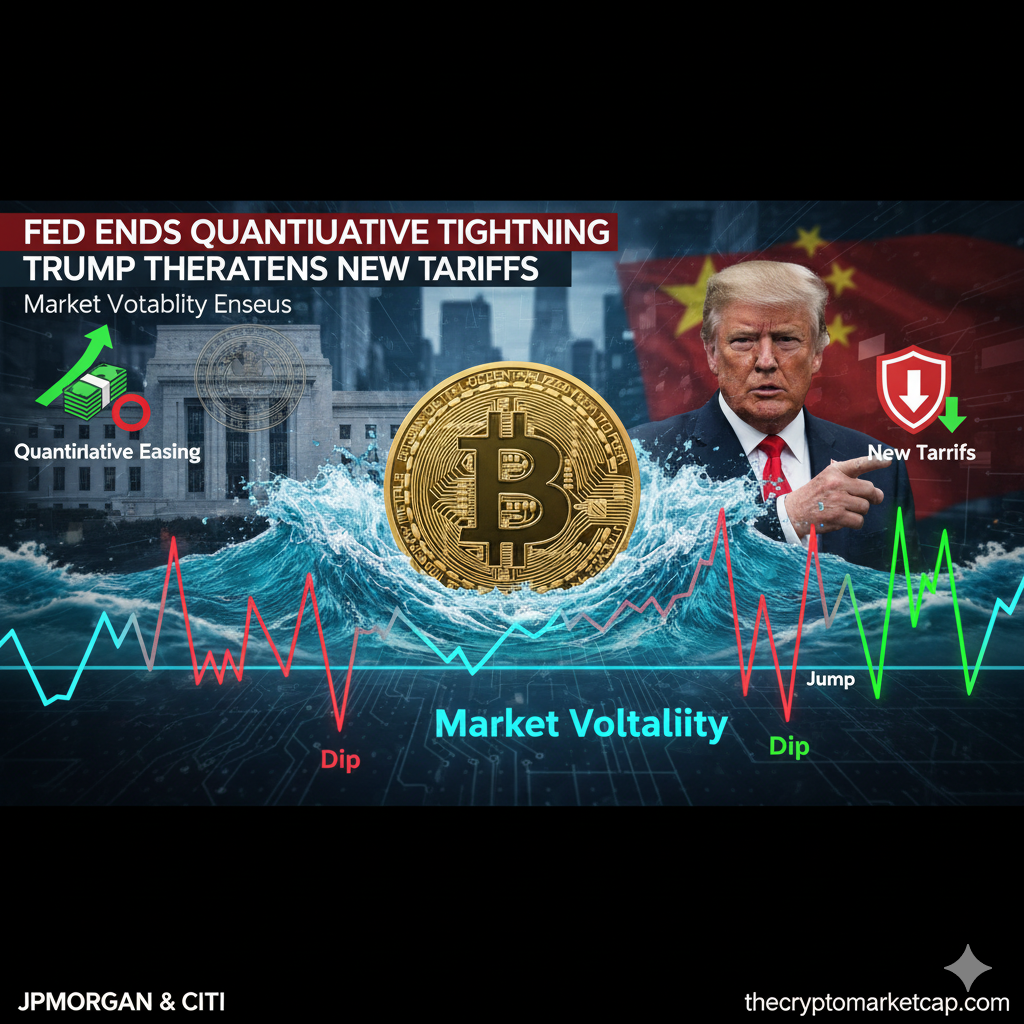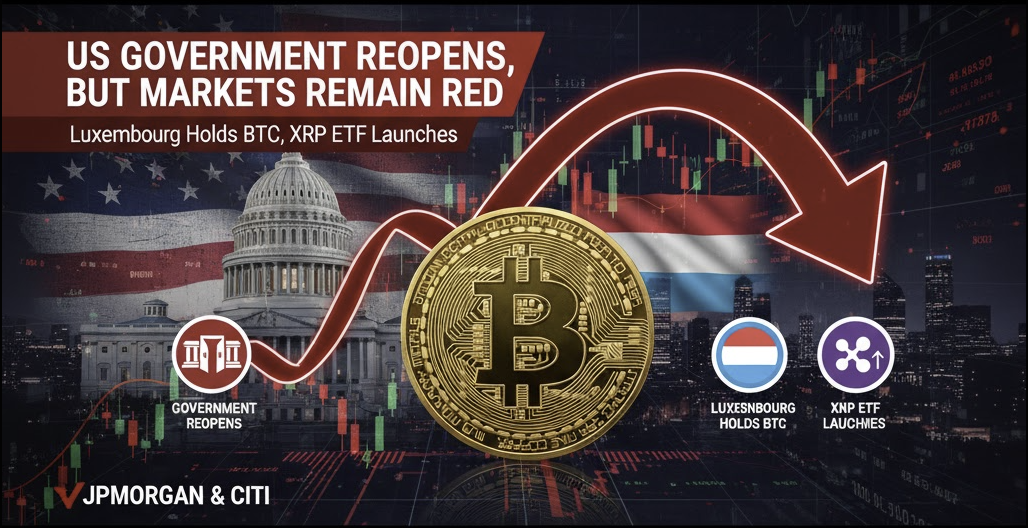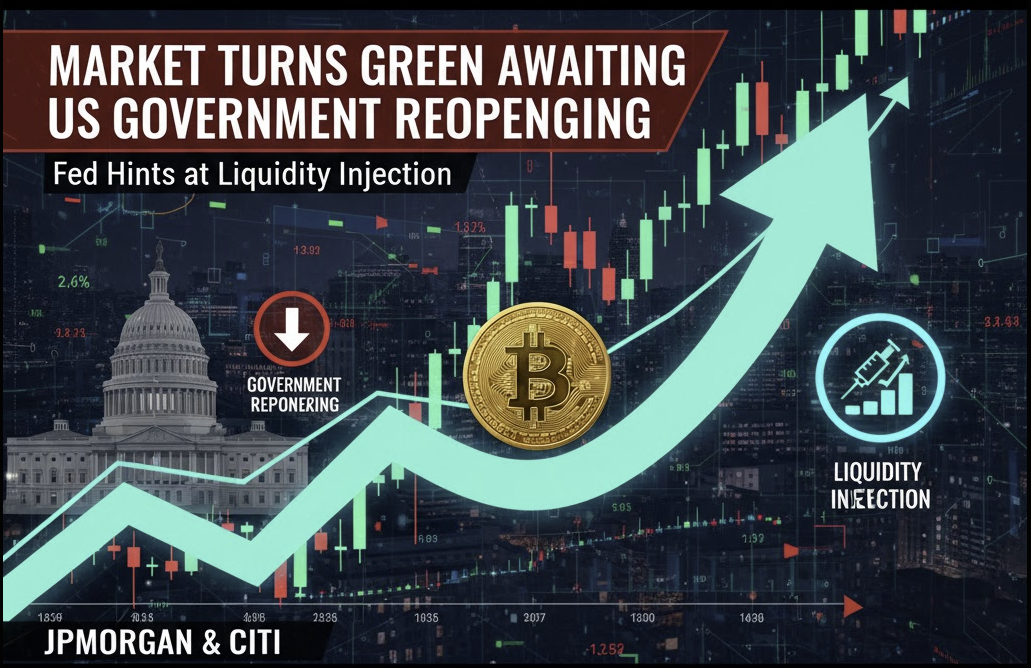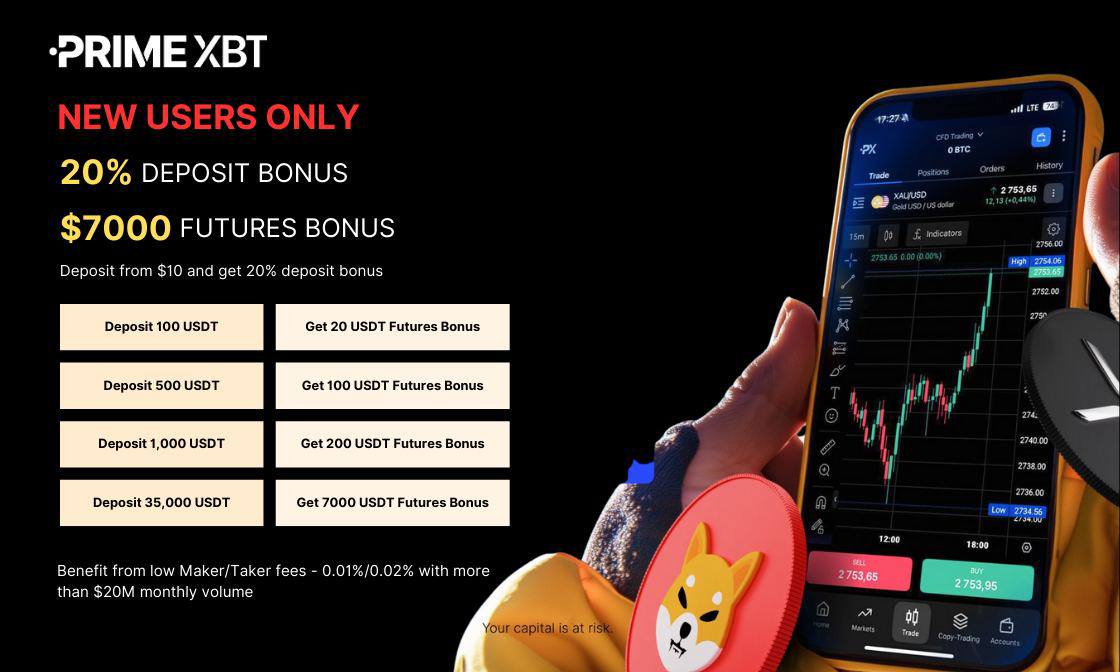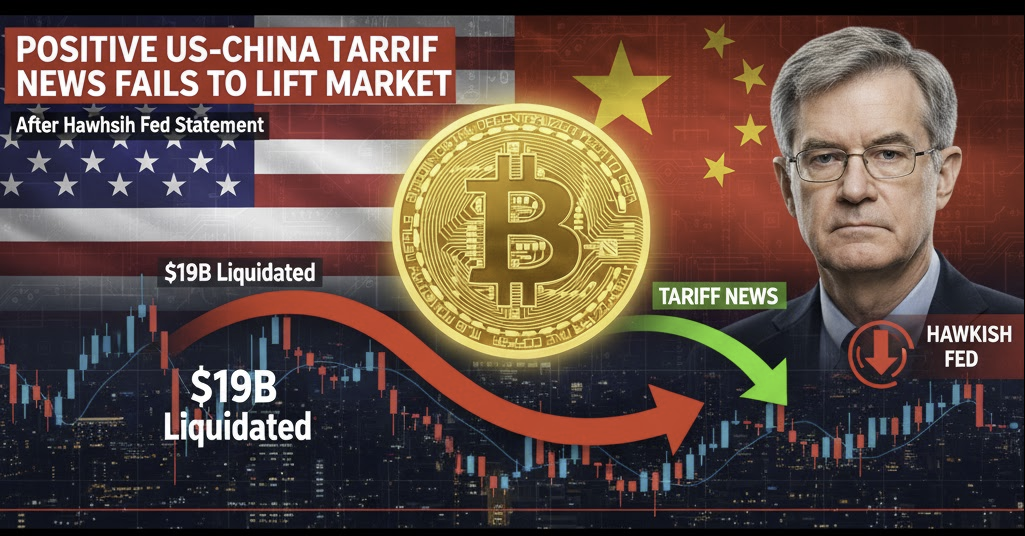Fed Chairman Powell signals the imminent end of quantitative tightening. Despite the good news from the Fed, new tariff threats from Trump are causing market anxiety.
Market Overview
Financial Market Swings
US equities closed mixed on Tuesday (October 14th, US). The Dow Jones saw a gain of 0.44%, while the S&P 500 and Nasdaq declined by 0.16% and 0.76%, respectively. Stock futures followed a similar mixed trend. Gold continued to climb to a new high of $4162 per ounce. Oil fell to $58.65 per barrel.
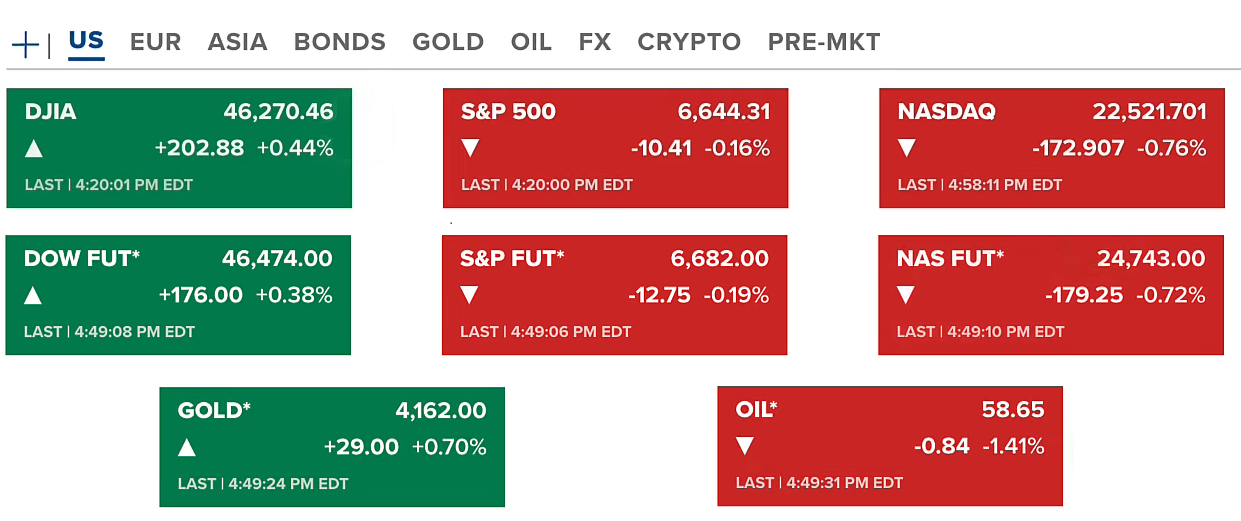
Bitcoin corrected to around $112,700. Most major altcoins also saw declines. The overall crypto market capitalization saw a slight correction to $3.95 trillion.
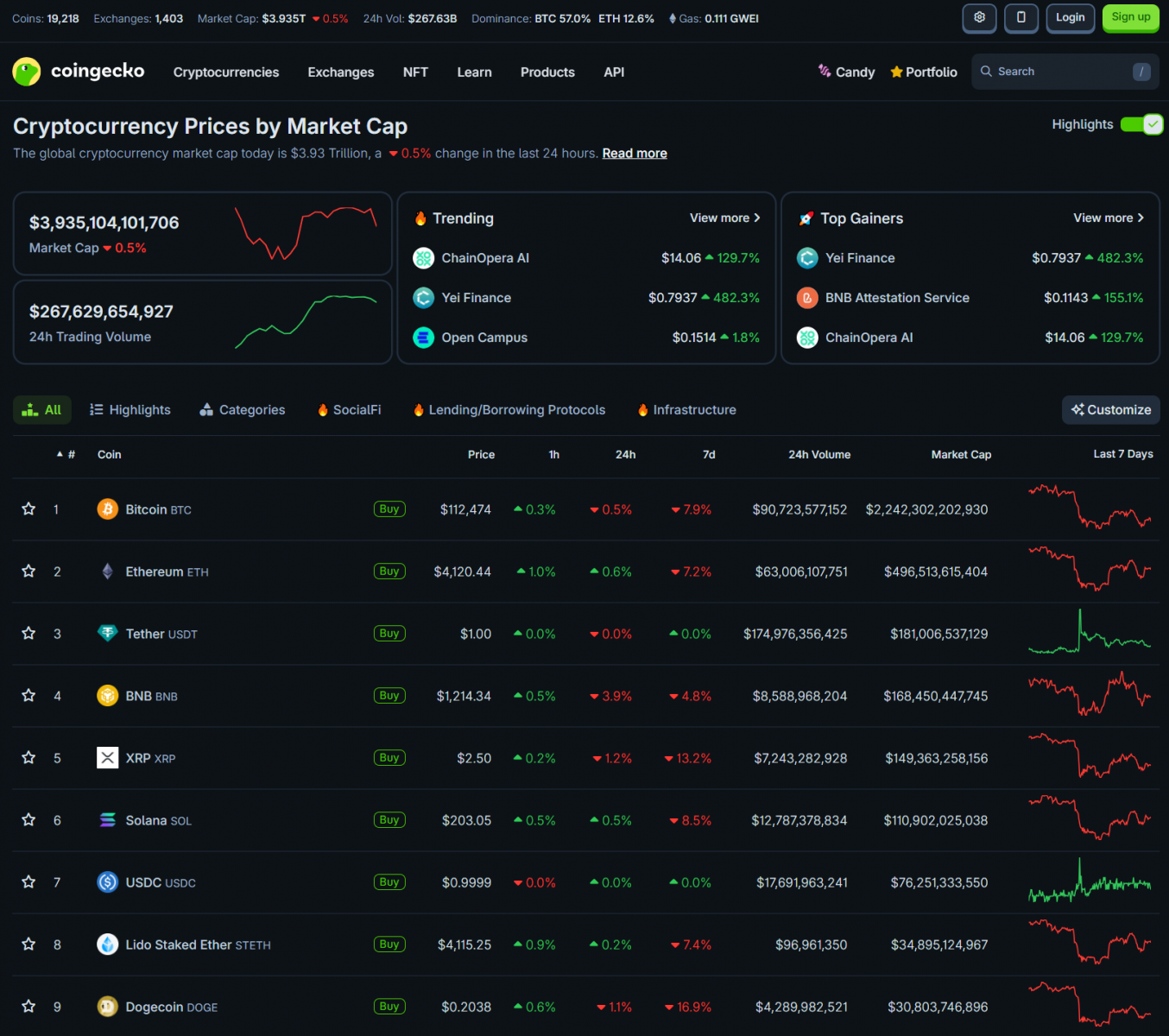
US BTC spot ETFs saw inflows return on Tuesday, totaling $102.7 million. ETH spot ETFs also attracted $236.2 million in inflows. Conversely, SOL ETFs saw $12.3 million in outflows after several consecutive days of inflows.

Fed Signals End to Quantitative Tightening (QT)
Fed Chair Jerome Powell stated that the Fed is nearing the end of its Quantitative Tightening (QT) program, meaning it will soon stop selling bonds to reduce the money supply. This step prepares the market for a phase of monetary policy easing, which will help liquidity return to the market. He did not specify a timeline but emphasized that bank reserves are already nearing the abundant level the Fed desires to maintain stable financial liquidity. Powell also confirmed that the Fed will not shrink its balance sheet back to pre-pandemic levels (around $4 trillion) but will maintain higher liquidity. Since the pandemic, the Fed has reduced its total assets from $9 trillion to about $6 trillion, effectively having withdrawn approximately $3 trillion in bonds.
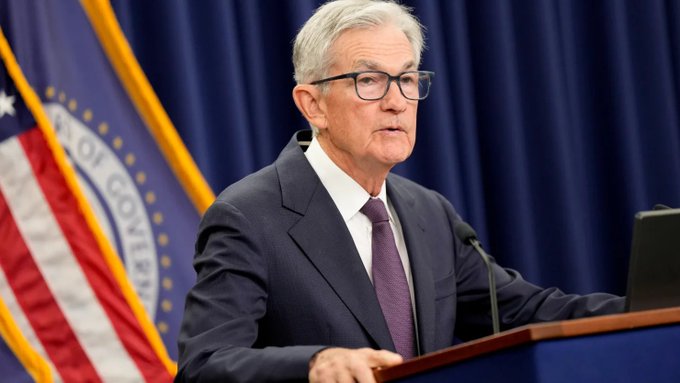
Powell did not confirm market expectations of two more interest rate cuts this year. He conceded that there is no perfectly safe option: keeping rates high weakens the economy and jobs, while cutting them risks increasing inflation. However, in the current context, the path of least resistance may be to cut rates, given the growing pressure from the public, businesses, and political figures. Overall, Powell’s statement is viewed as a positive signal for liquidity and the financial market, implying that the Fed is moving closer to ending tightening and preparing for a new easing cycle.
Tariff Update: Trump Threatens Again
Trade tensions between the US and China flared up again over the weekend after President Trump threatened a 100% tariff on Chinese goods following Beijing’s announcement of tighter export management on rare earth minerals. China responded that it merely intended to manage licensing more strictly and was not aiming to disrupt the global supply chain. Although Trump later reassured that “everything will be fine,” US Trade Representative Jamerson Greer still warned that Washington could indeed impose tariffs if China does not ease restrictions, emphasizing that the US cannot allow Beijing to control the global high-tech supply chain. Nevertheless, both sides are maintaining channels for dialogue, and Trump is expected to meet President Xi Jinping at the APEC conference later this month, opening the possibility for tensions to cool down.
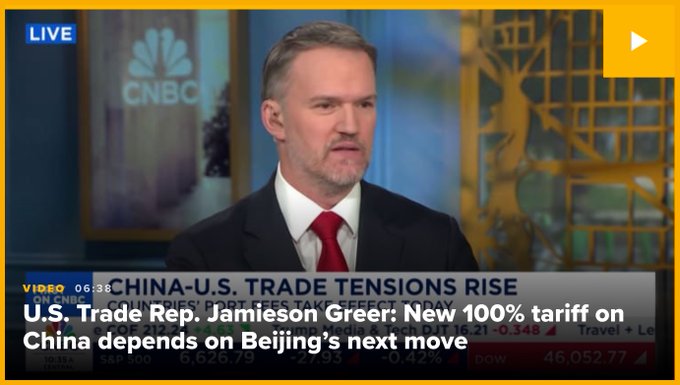
Market observers believe this could be a “Trump tactic trade” negotiation strategy: issuing strong threats to gain leverage, then gradually easing the stance. However, concern remains that the risk of a trade war is not over, especially as Trump continues to warn about halting edible oil imports from China in retaliation for Beijing’s refusal to purchase US soybeans. Although the likelihood of full escalation is considered low, anxiety is still present. However, financial markets generally focused more on Fed Chair Jerome Powell’s statement about the imminent end of Quantitative Tightening (QT) as a more positive signal for global capital flow.
I believe that the US-China tariff tensions do not have a direct or long-term impact on most asset classes, particularly the crypto market. Tariffs primarily affect businesses with cross-border supply chains like Nike, where increased import costs reduce profits and lead to stock adjustments. However, for Bitcoin and digital assets, the impact is only indirect and short-term, primarily filtering through market sentiment. Furthermore, the likelihood of President Trump actually imposing a 100% tariff is low, as the current rates are already very high, causing losses for both US and Chinese businesses. Many of the taxed goods are not essential, so if prices increase, demand will fall, making it difficult for either side to maintain business activity. In summary, tariffs are only a short-term volatility factor and do not affect the long-term fundamentals of the crypto market.
Bitcoin as a Reserve Currency Like Gold
Larry Fink, CEO of BlackRock, stated on the “60 Minutes” program that Bitcoin could serve as an “alternative reserve currency to the USD.” He suggested that crypto has a role similar to gold, helping to balance portfolios, especially when investors seek an alternative to the USD or stocks. He previously criticized Bitcoin as a “tool for criminals and money laundering,” but has now changed his view, saying: “The market always teaches us to re-examine our assumptions.” However, he emphasized that crypto should not take up a large portfolio allocation, but should be a small supplement for diversification. He also urged the US government to quickly enact clear crypto laws and encourage investment in digital technology innovation, as this will be key to the crypto industry’s long-term growth. BlackRock is the world’s largest asset manager, managing $12.5 trillion.
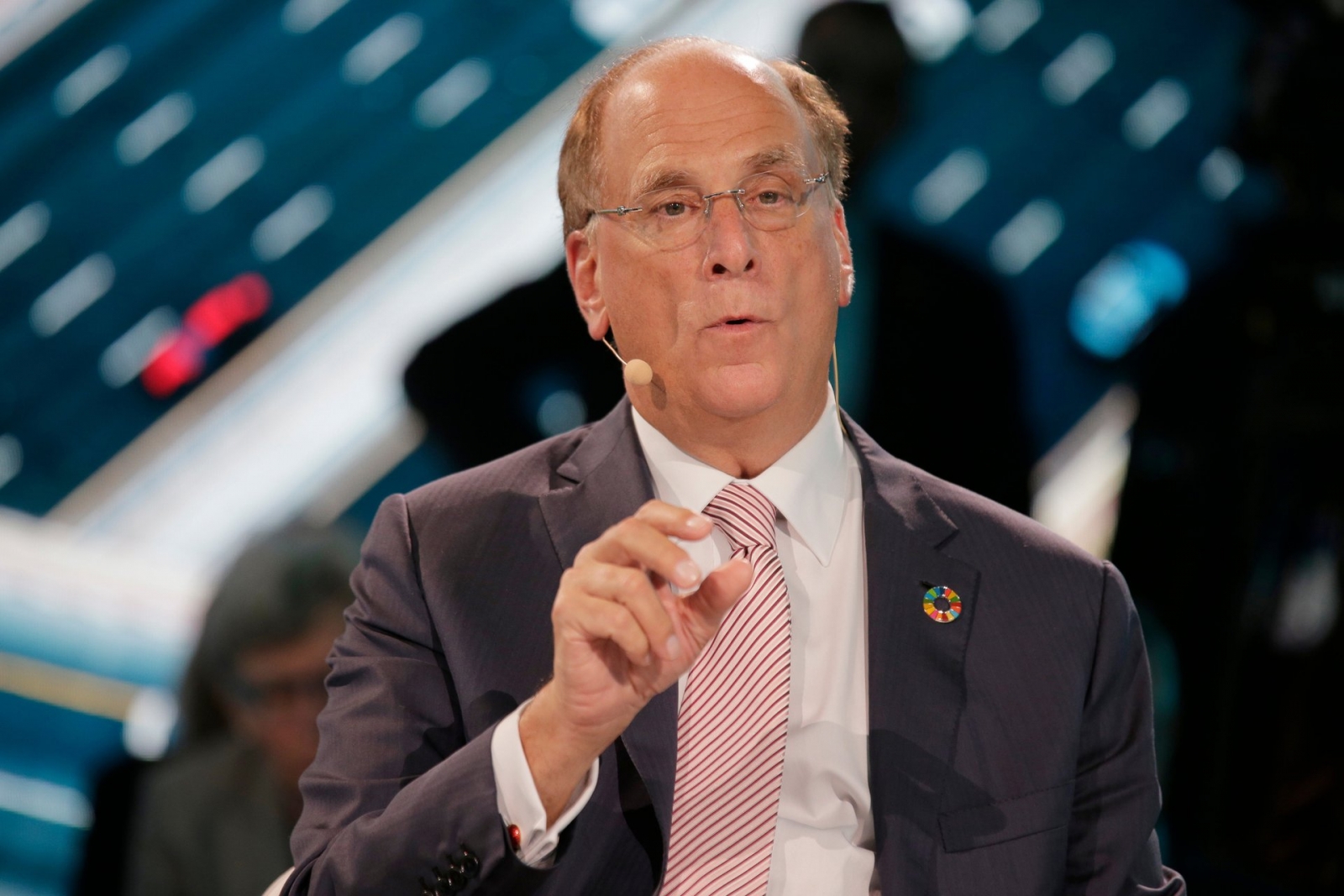
Furthermore, CEO Larry Fink stated that BlackRock‘s future will focus on digital transformation, as the company gradually moves away from traditional financial assets to put them on the blockchain. He believes that tokenizing ETFs will open up opportunities to attract investors from the crypto sector and guide them toward long-term products like pension funds within a comprehensive digital investment ecosystem. Fink views this as a multi-decade transition that will reshape how people invest. He also revealed that BlackRock’s Spot Bitcoin ETF (IBIT) has surpassed $100 billion in assets, becoming the fastest-growing ETF in history.
California Pioneers Crypto Protection Law
While the federal government lacks clear laws, many states are pushing forward with crypto legislation. California just passed law SB 822, becoming the first state in the US to protect unclaimed crypto from being forced to be sold and converted into cash. Under the new law, Bitcoin, Ethereum, and other cryptocurrencies are treated as legal assets, similar to abandoned bank accounts or securities. If a crypto account is inactive for three years, the assets will be transferred to a state authority for management but will retain their original crypto form, without being sold. Previously, the old draft bill required selling crypto into cash, which generated taxes and resulted in a loss of ownership rights for users. Thanks to the advocacy of the California Blockchain Advocacy Coalition, this requirement was removed. Exchanges or custodial wallets must notify the account holder 6-12 months in advance, then transfer the assets intact (including the private key) to the state if there is no response. The owner can still reclaim the exact cryptocurrency at any time.
Other Key Crypto & Market Updates
Elon Musk posted about Bitcoin again after a very long silence: “That’s why Bitcoin is built on energy. You can print fake fiat currency, and every government in history has done that, but no one can fake energy.”
Bhutan is upgrading its National Digital Identity (NDI) system by transitioning from the Polygon blockchain to Ethereum, aiming to enhance security and efficiency. The NDI project allows approximately 800,000 citizens to store and share their digital identity information for online services, and has been operational since August 2024. Furthermore, Bhutan is notable for its strategy of integrating blockchain into its digital economy and for its Bitcoin mining activities, currently holding 6,371 BTC, ranking 6th globally in Bitcoin reserves, after the US, China, the UK, Ukraine, and the UAE.
Analysts at Bernstein predict that the USDC supply will grow from $76 billion to $220 billion by the end of 2027, capturing one-third of the global stablecoin market. Due to its regulatory compliance, strong liquidity, and partnerships with Coinbase and Binance, Circle’s USDC is expected to benefit significantly once the new US stablecoin law takes effect. Bernstein estimates USDC‘s market share will reach 33%, up from the current 29%, while Tether’s USDT will still lead with $180 billion (62%) out of a total stablecoin market cap of $290 billion, followed by USDe, Dai, and USDS.
The US Department of Justice (DOJ) has seized $15 billion worth of Bitcoin from a global crypto scam network based in Cambodia. This is considered the largest asset seizure in history. The alleged mastermind is Chen Zhi, Chairman of the Prince Holding Group, who ran a network of “scam farms” using forced labor to defraud global investors via social media and messaging apps. The “Pig Butchering” scheme lured victims into believing in a relationship and a fake investment opportunity before stealing all their assets. Chen Zhi and his accomplices are also accused of bribery and leveraging political influence to conceal illegal activities. They are currently being sought by authorities.
Sources
- Bloomberg
- CoinDesk
- U.S. Treasury
- TradingView
- Reuters
- SEC
- White House Press Office
- Larry Fink (BlackRock, 60 Minutes)
- Jerome Powell (Fed)
- Elon Musk (X/Twitter)
- Bernstein Research
- California Blockchain Advocacy Coalition
- Bhutan National Digital Identity (NDI)
- US Department of Justice (DOJ)
Disclaimer
This article is for informational purposes only and should not be considered financial advice. Please do your own research before making investment decisions.

